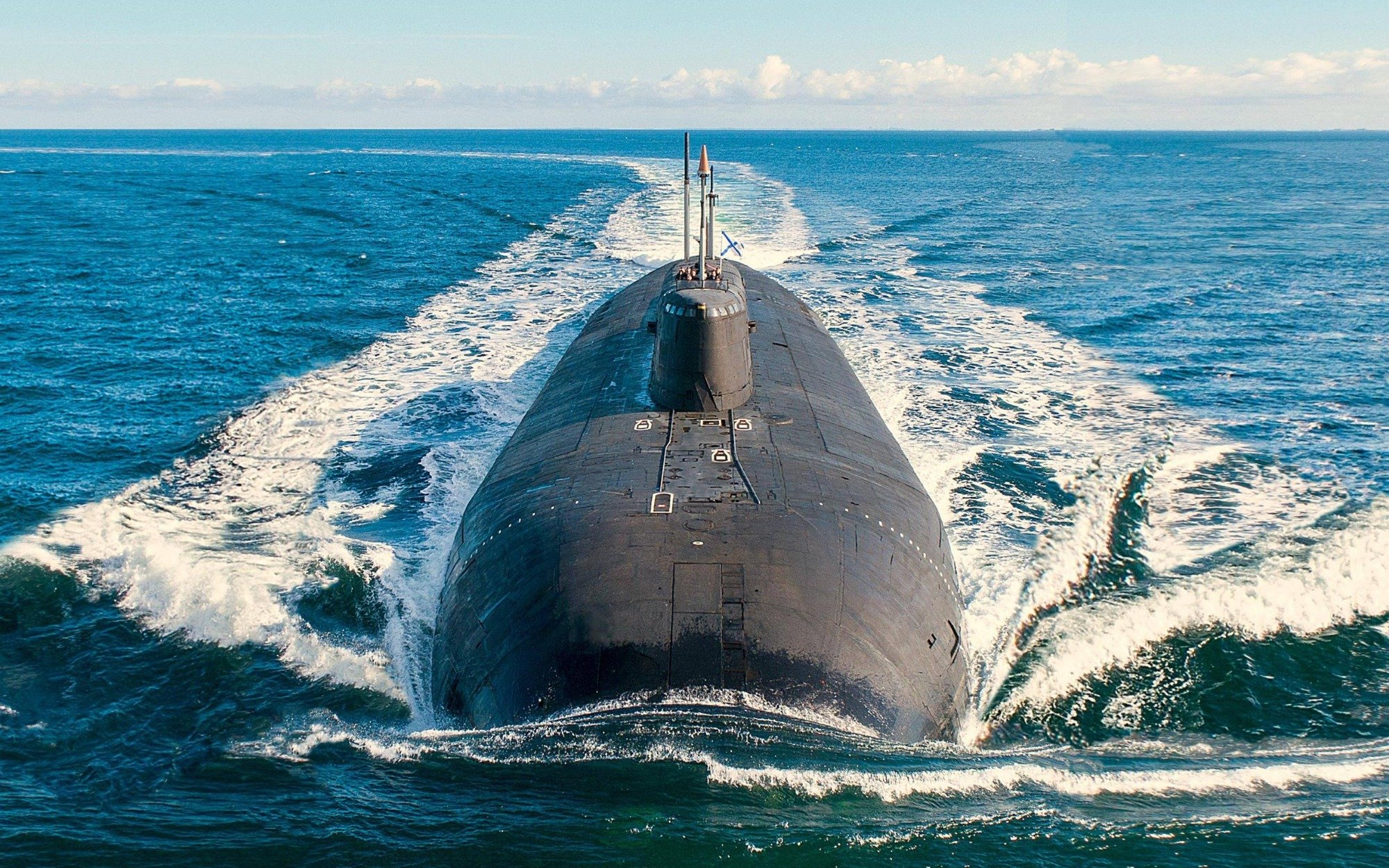The crew of the Belgorod nuclear submarine has reportedly completed a series of tests of the Poseidon torpedo mock-up. This was reported to TASS, citing a source close to the Russian military department.
According to the source, the test’s purpose was to check the operation of the Poseidon launch system. Throw firing of the Poseidon super-torpedo model was carried out to clarify the behavior of the submarine at different depths after the launch,” the source said.
According to unnamed senior US officials cited by CNN earlier, the US Intelligence observed the Russian naval vessels possibly preparing for the first-ever test of Poseidon nuclear torpedoes capable of hitting American coastal cities.
Among the vessels involved in the alleged preparations was the nuclear-powered Belgorod submarine the Russian Navy inducted in July. However, at the time of its induction, it was not revealed where the Belgorod would be deployed.
The Belgorod submarine was constructed from the hull of an Oscar-II cruise missile submarine that was never completed. It is specially customized to launch unmanned underwater vehicles, including the Poseidon torpedo.
According to a US Congressional Research Service (CRS) report, the Belgorod could carry up to eight nuclear-tipped Poseidons. However, some weapons experts say its payload is more likely to be six torpedoes.
Earlier, the US observed the Russian naval vessels, including Belgorod, leaving the testing area in the Arctic Sea and heading back to port without conducting a test. The US officials believe the test might not have been carried out because of technical difficulties.

The latest report comes after a secret NATO report in late September raised concerns about Belgorod’s deployment in Arctic seas, possibly to test the Poseidon UUV for the first time.
Based on the reports above, it appears that the Russian Navy might have spent more than a month in the Arctic Sea preparing for the test but aborted allegedly due to technical difficulties.
Nevertheless, US officials had accessed that Russia could make another attempt to test the torpedo. Reports suggest the test of the nuclear torpedo could “inflame tensions” between the US and Russia even further at a time when Washington and its European allies are monitoring signs of the Russian military’s potential use of nuclear weapons in Ukraine.
The US does not expect the tests to involve the detonation of a nuclear device, however, besides being nuclear-capable, the Poseidon is also nuclear-powered, and any potential danger from a malfunction of the miniaturized nuclear propulsion system inside that torpedo could cause a radiation leak.
Poseidon Underwater Unmanned Vehicle (UUV)
The Poseidon UUV is one of Russia’s six strategic weapons, also known as ‘Super Weapons,’ that Russian President Vladimir Putin unveiled during a speech in 2018 at the Manezh Central Exhibition Hall near the Kremlin.
Other super weapons include the Sarmat Inter-continental Ballistic Missile (ICBM), Avangard Hypersonic Glide Vehicle (HGV), the Burevestnik cruise missile, the Kinzhal air-launched hypersonic missile, and the Tsirkon ship-launched hypersonic missile.
Poseidon is perhaps the biggest game-changing super-weapon in the Russian arsenal, adding another dimension to nuclear deterrence. It is an ‘Intercontinental Nuclear-Powered Nuclear-Armed Autonomous Torpedo.’
The weapon’s speed is expected to be around 70 knots – faster than existing torpedoes – and according to some reports, maybe even 108 knots, making it uncatchable. Its operating depth is about 1,000 meters (3,300 feet), thus making it elusive as well.
https://youtu.be/QP1kADQ3jXg
Powered by a nuclear reactor, the Poseidon UUV has an unlimited range of operational flexibility in terms of launch and target locations. It can also be launched from under the ice caps.
Poseidon: Ingenious Method Of Nuclear Deterrence
The Poseidon represents a very ingenious method of nuclear deterrence envisioned by Russian military planners.
Russians have long wanted to circumvent the American ballistic missile defense systems deployed in Europe, creating a strategic imbalance against Russia. So, deploying nuclear weapons underwater enables the Russian military to evade a US Ballistic Missile Defense (BMD) screening.
The Poseidon is also said to be capable of performing “three-dimensional” evasive maneuvers to increase its longevity.
Moreover, the US has a network of satellites equipped with infrared sensors to detect and track Russian intercontinental ballistic missiles. In the air, the ignition of the missile engine generates extreme heat, creating a temperature difference against the cold background for the satellites overhead to pick up.
Instead, satellites can’t see what happens in the depths of the sea. Besides, Poseidon is reportedly designed to emit very little heat and travel silently.
Armed with a two-megaton nuclear warhead, the Poseidon can destroy aircraft carrier strike groups (CSG) and enemy infrastructural facilities in coastal regions.
It will most likely serve in the Pacific Fleet, threatening US naval bases on the West Coast and key cities like Los Angeles. Russia intends to deploy just over 30 Poseidon UUVs.
In November 2020, Christopher Ford, then US assistant secretary of state for international security and non-proliferation, said Poseidons are being designed to “inundate US coastal cities with radioactive tsunamis.”
- Contact the author at tanmaykadam700(at)gmail.com
- Follow EurAsian Times on Google News